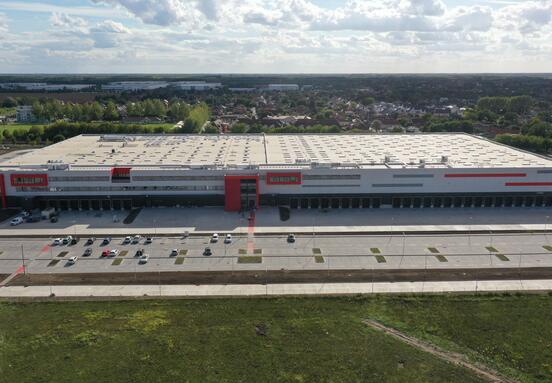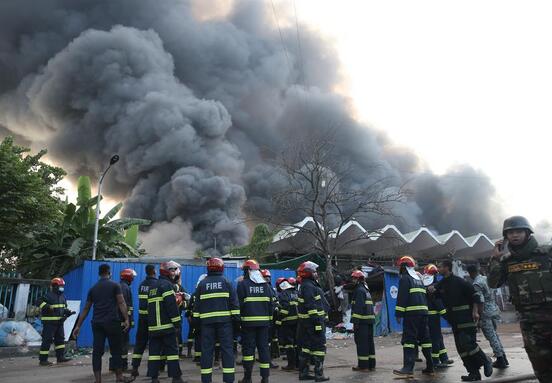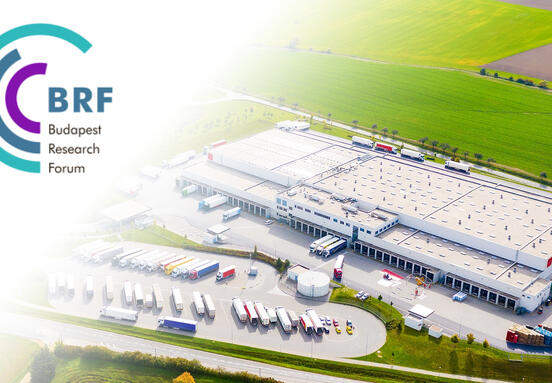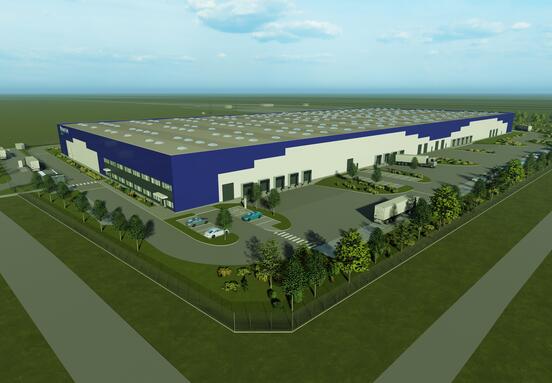In contrast, challenges have become more pronounced for retail real estate. Collectively, these changes have prompted retail owners to explore the opportunity to convert retail space for distribution uses. Prologis Research sized this trend to measure the potential implications for our industry.
Key takeaways:
- Economic, including re-tenanting as retail; other higher and better use cases including apartments; and, high costs basis as logistics alongside the frequent presence of locally competitive alternative logistics submarkets.
- Physical, including poor reconfigurability of existing structures; inefficient site layouts/geometry; and, sites as too small for logistics uses.
- Legal, including reciprocal easement agreements (REAs); co-tenancy limitations; and, multi-party negotiations that prevent or elongate redevelopment to logistics.
Conversions will vary widely by retail format.
- Conversion of enclosed malls are likely to be among the most complex and long-lasting re-entitlement projects in the coming years. Yet, excess mall supply and stress among these retailers mean conversions will be more commonplace compared with other categories (although the smaller scale of the mall business likely means low levels of new logistics).
- For open air shopping centers, conversions to logistics are likely to be small due to the better health of retailers in this category and site-specific barriers including small site sizes, inefficient geometry and zoning.
- Freestanding retail is the largest category in the U.S. and, even though conversions may be rare due to site sizes and locations, this category should prove to be the largest source of conversions. Those on the peripheries of mall complexes are easier to convert.
Small-scale. Retail conversions to logistics could amount to 5-10 MSF per year (50-100 MSF over the next decade). This amounts to:
- <5% of Last Touch® facilities, which amount to 1.5-2.0B square feet in the top 25 U.S. markets
- <1% of existing logistics real estate facilities, which is 10B square feet in the top 25 U.S. markets
- <3% of typical annual logistics real estate new construction of 250-275 MSF in the top 25 U.S. markets
- <10% of the logistics space needed to meet the incremental demand we anticipate due to an acceleration of structural trends related to COVID-19.
Introduction
Online spending is generating significant demand for logistics real estate. COVID-19 has pulled forward five years of expected online sales growth into just five months. Already a fast-growth category, online sales have accelerated dramatically and are on pace to reach $340B globally in 2020.1 This growth generates substantial demand for logistics real estate, given that e-commerce requires +/-3x the space compared with traditional throughput distribution.2 The share of U.S. retail goods sold online is now expected to reach more than 25% by 2024.3 This higher revenue share will require multi-channel retailers to make new and material investments in their supply chains, including new reverse logistics to handle return volumes. The repurposing of existing retail real estate has begun to be seen as one way to address this significant increase in anticipated demand.
Headwinds to retail real estate have led owners to evaluate conversion opportunities. Historically, a wide gap has existed between a site’s feasibility for logistics versus retail. At the same time, the rise of Last Touch® requirements has led to material increases in logistics rental rates. Retail owners are doing their due diligence across a range of value creation possibilities, including conversion to logistics, along with other property types, mainly multi-family.
Retail-to-logistics conversion considerations
There are four main challenges each retail site faces when considering conversion to logistics. In our examination of retail sites and opportunities, we found numerous challenges to retail-to-logistics conversions:
Economic. Basic economics are the most common limiting factor of conversions. While COVID-19 has hit the retail space hard, the next- generation use of retail vacancies is most likely to be a new retailer. This is particularly true for mid- and smaller-scale retail sites, which have a higher proportion of basic daily need customers. By contrast, challenges for retailers within the mall space are greater, but with important differences between high- and lower-quality malls. As conversion from retail becomes more likely, other property types routinely value the site at a premium to logistics. These other use cases may exceed the opportunities for logistics, and include conversions to other retail formats; single and multifamily residential; office uses such as life sciences; hotels; universities; and, community and municipal uses.
Even if a retail owner is committed to conversion to logistics, redevelopers must contend with a new high basis. Many sites are located close to existing logistics submarkets (e.g., with 2-5 miles). These submarkets can be well-established with a critical mass of logistics space offerings; are very competitive from a cost (rent) perspective; and, designed to handle larger and more efficient supply chains, transportation modes, and labor needs. That pricing can imply a total cost, and critically a land basis, that is difficult for the retail redevelopment site to match.
Political. Municipalities in prime and infill markets often are reluctant to downzone sites to logistics. Doing so can seem to threaten losses in sales tax revenues, which limits the opportunity size. Communities are often opposed, too. Even in motivated municipalities that support redevelopment, complexities associated with rezoning and unlocking lease encumbrances can take several years to accomplish. Challenges are particularly high for small- and mid-sized formats (e.g., community and power centers <500,000 square feet), where it’s common for retail sites to be immediately adjacent to residential.
Physical. Not all retail sites are viable for logistics. Minimum sizes are typically 8-10 acres (smaller sites are possible but rare and often not profitable to redevelop), which eliminates, for example, strip malls and most neighborhood centers. Community centers are larger but can be long and narrow (to maximize street frontage), which inhibits potential conversion to logistics, requiring larger truck courts and loading flexibility. Power centers and larger community centers are viable, but only for full redevelopment. Partial large box/anchor redevelopment usually indicates a scenario in which operational compromises overshadow financial upside. Anchor conversions are possible, but only in the case of malls, which are typically about 500,000-1 million square feet or larger and, by design, scaled for greater flexibility.
Legal. Even when circumstances align to make retail-to-logistics conversions viable, the actual execution at reasonable pricing can be time-consuming and layered. Many parties have stakes in the outcome. Challenged sites can mean negotiations with both equity and debt holders. In the case of malls, land is often controlled by multiple owners. Lease provisions including REAs and co-tenancy clauses give rights to existing users that can prevent rezoning to accommodate logistics users. Stakeholder opinions on the advisability of conversion to logistics vary widely and are therefore likely to draw out the process over many years.
In summary, retail-to-logistics conversion rates will be low and time frames will be long. The rate of conversion is likely to be the most active among malls, where supply is highest and the shift to online has been the most disruptive. Conversion among smaller formats is possible but will be comparatively rare due to competitive uses (retail or otherwise), site challenges and local community preferences.
Sizing the retail-to-logistics conversion trend
Incremental new supply for logistics from retail conversions will be 5-10 MSF per year in the coming decade in our estimation. To accurately size the retail-to-logistics trend, a detailed review for each category of retail is necessary. Our analysis covers malls, power centers, community centers, neighborhood centers and strip retail. Cumulatively, these formats equate to roughly 7.5 billion square feet across the U.S.4 For sites that will be completely rebuilt, coverage ratios will be able to be increased (from the mid- to high-20%s to the lowto-mid-30%s, or an increase of 1.1-1.2x). From a timing perspective, this trend is still in its infancy and will likely be a slow rising tide as the rezoning/entitlements and repurposing for larger scale projects play out over years. Our analysis focuses only on Prologis markets (the top 25 U.S. markets). Ultimately, we estimate that about 50-100 MSF will be converted to logistics over the next decade. Our estimation is based on the following assessment by retail category:
Full mall redevelopment. As the category facing the most disruption from online spending and challenged retailers, we expect conversion opportunities to be highest for malls. For the most part, Class-A and Class-B malls remain viable as retail real estate, whereas comprehensive redevelopments are unlikely. Class-C and Class-D malls face greater challenges (e.g., sales <$500/ft with owners facing heavy retenanting costs, often for weaker credit tenants) and full redevelopment opportunities exist. Of the approximately 1,200 malls in the U.S., 33% are in Prologis markets (40% on an NRA basis) and less than 25% in Last Touch® markets (20% on an NRA basis). Of those malls in the top 25 markets, the Class-C and Class-D amounts to a potential universe of 60 malls comprising 60-65 MSF. Our review of these malls suggest logistics will not be a primary redevelopment option. We estimate that 10-20% of C and D malls, totaling about 11 MSF (7-15 MSF), could be fully redeveloped for logistics use.
Mall anchor redevelopment. For Class-A and Class-B malls, anchor redevelopment (generally 80-100 KSF footprints) has begun to become feasible. We estimate there will be anywhere from 60-110 malls with an anchor redevelopment among the roughly 400 malls in Prologis markets. Of roughly 200 Class-A malls, we estimate that 1 in 20 may have an anchor-logistics conversion. Of the nearly 150 Class-B malls, we estimate that 1 in 5 may have an anchor-logistics conversion. Of the roughly 50 Class-C malls, many (50% or more) may have an anchor logistics conversion in our markets. Taken together, this amounts to 85 retail-to-logistics conversions and approximately 8 MSF in new supply (6-11 MSF, assuming one anchor per mall and 100,000 square feet anchor). This estimate is most sensitive to assumptions around Class-A malls; moving the anchor conversion rate to 1 in 5 malls, a very high rate given alternative uses, increases the redevelopment square footage by just 3 MSF.
Mall anchor reuse is constrained by insufficient building specs for logistics uses. Class-B and Class-C malls often have lower clear heights, inefficient column spacing, limited capacity for dock doors and reduced load capacity on slabs relative to modern logistics facilities. These specs pose challenges and cost considerations for adaptive reuse. While some customers may compromise and settle for C-quality specs based on a timing or a location need, nearby modern facilities will be long-term considerations.
Freestanding retail will be another source of opportunities. The largest category of retail is stand-alone facilities. While our experience tells us that conversion of freestanding retail will be rare, opportunities exist. Further, the sheer scale of the category means it may be the leading source of conversion candidates, although only larger sites are feasible (e.g., larger than 6-8 acres). While the challenges to conversion are multifold, including zoning and proximity to existing logistics product, these projects do not face as many issues as other forms of retail, such as REAs and co-tenancy clauses. Prologis has already converted multiple facilities for our customers’ use, in markets ranging from New York to Los Angeles. We estimate the total trend could amount to roughly 45 MSF over the next decade (22-66 MSF).
Redevelopment of other shopping centers will be rare. Stress among the customer base across power centers, community centers and neighborhood centers is less pronounced than malls. In the Prologis markets, there are very few examples of truly challenged retail centers with occupancies below 50%. In addition, zoning and community preferences will limit conversion to logistics given these centers’ central locations. For power centers, REAs will also be a limiting factor. Among smaller formats, irregular site geometry and immediate proximity to residential will be challenges. In all cases, alternative real estate uses (such as apartments) are viable. Of potential supply coming from retail-to-logistics conversions, we estimate only 5 MSF (0-10) to come from power centers, about 6.5 MSF (0-13) from community centers, and less than 5 MSF from neighborhood centers. Strip centers are too small to support notable logistics projects. In total, we estimate these categories may generate 13 MSF of retail-to-industrial conversions.
Conclusions
Opportunities for retail conversion vary widely by format. Conversions are likely to be most pronounced in the mall space, although as a modest sized overall category, does not translate to significant new logistics supply (e.g., roughly 20 MSF over the next decade in Prologis markets). The retail business is substantially larger among smaller formats, with more than 5 billion square feet for power, community and neighborhood centers (versus 1.1 billion square feet for malls). However, the rate of potential conversions among smaller formats will likely be substantially lower. In total, we estimate retail-tologistics conversions will amount to 77 MSF of logistics over the next decade, or 8 MSF per year. We judge a confidence band of 50-100 MSF, 5-10 MSF, is a reasonable estimate.
The retail-to-logistics conversion trend will take a long time to play out. Even when strategy and economics align, conversions won’t happen quickly. Conversions will trend up over time. Existing agreements will be a near-term hindrance, with considerations including REAs and co-tenancy clauses. Complex equity and debt ownership groups, plus permitting and approval considerations, post further complications and delays.
Viewed through the lens of traditional logistics metrics, the retail-to-logistics trend is likely to be small:
- With 1.5-2.0 billion square feet of Last Touch® facilities in Prologis markets, we estimate retail conversions will amount to less than 5% of stock in this category (or just 0.5% of annual growth over the next decade).
- With 10 billion square feet of total logistics stock in Prologis markets, we estimate retail conversions will amount to 0.75% of stock over the next decade.
- With some 250-260 MSF of annual completions in Prologis markets, we estimate retail conversions will amount to less than 3% (2.9%) of annual completions over the next decade.
- With upwards of 750 MSF of incremental logistics demand due to COVID-19, we estimate retail conversions will comprise just 5% of the logistics space needed to meet this incremental demand driven by increased inventories (as retailers make supply chains more resilient) and higher e-commerce adoption.
Prologis








